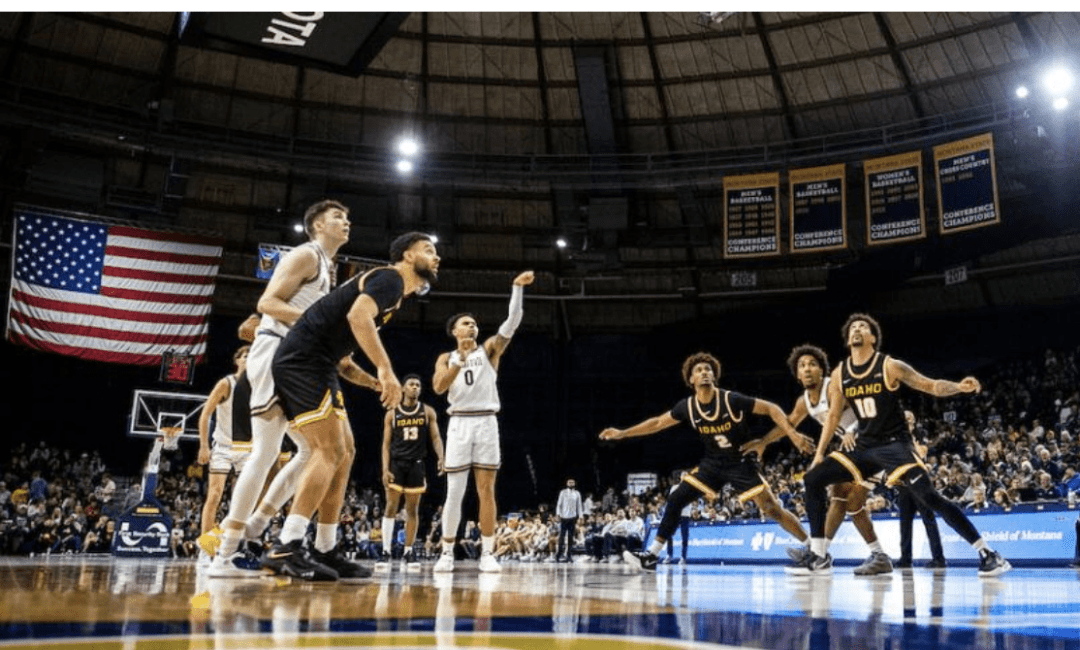As soil acidity threatens Montana fields, Montana State research explores remedies

MSU Photo by Adrian Sanchez-Gonzalez
BOZEMAN – As soil acidification becomes a more pressing issue for Montana farmers, researchers in the Montana State University College of Agriculture are conducting on-farm experiments around the state to help explore precision treatments that fit the conditions measured in individual fields.
Assistant research professor Manbir Rakkar and professor Clain Jones of the Department of Land Resources and Environmental Sciences are taking a multifaceted approach to managing and preventing increases in soil acidity, which is largely caused by repeated application of nitrogen fertilizers and can be made worse by growing the crops that require those fertilizers on the same land year after year.
While other states, such as Idaho, Washington, Oregon and the Dakotas, have been grappling with soil acidity for years, the issue was first really discovered in Montana around 2015, said Jones, who has been working on research into the issue ever since.
“We recognized it as something that needed to be addressed,” said Jones. “The majority of farmers don’t have this problem, but those who do can have up to complete crop loss.”
Jones estimates that around 5% of Montana’s cropland is affected by soils with a pH below 5.5, which is the acidity level at which significant problems can begin to emerge. But one of the things that makes it such a difficult problem is that acidic soils are often found only in patches across a field, and in many instances when soil pH is tested, samples from various locations are combined, resulting in an average acidity measurement for a large area. Low pH and high pH patches may cancel each other out, meaning producers often don’t realize they have an acidity problem.
However, testing more soil samples per acre can be too expensive, so MSU researchers are exploring alternatives such as remote imagery and sensing technology, which could save money and provide a more detailed soil acidity data for a field.
To detect acidic spots within a field, Rakkar said a better approach than traditional composite testing is for farmers to scout their fields periodically. Yellow or stunted plants, poor root development or other unexplained crop growth issue could be an indication of a soil acidity problem. Soil samples from such problematic areas should not be combined with other samples, she said.
The standard approach to correcting low soil pH is to apply lime products such as spent sugar beet lime, said Jones. However, that requires special equipment and can be costly, especially if farmers opt for blanket application across their fields.
Rakkar hopes her work will help producers to make more informed decisions for precise lime application on acidity-affected areas.
“We’re trying something different than just soil sampling to determine soil acidity,” said Rakkar.
One of those approaches has been to use drones to measure NDVI, or normalized difference vegetation index, which measures the biomass, or “greenness,” in a field — a commonly used indicator of plant and soil health. Jones and Rakkar will seek to identify whether NDVI is affected by soil acidity, something they deem likely.
“If we can correlate NDVI and soil pH, it would be much easier to detect soil pH issues over larger acreages in a very time-efficient method,” said Rakkar.
With funding from the Montana Fertilizer Advisory Committee, Rakkar and Jones are also planning to continue partnerships with producers around Montana to conduct on-farm experiments — rather than only working on MSU’s research farms and centers around the state — that aim to monitor the effectiveness and longevity of different lime products.
They’ll also look at whether different crop rotations could help alleviate acidity. Growing perennial crops such as alfalfa grass or other forages may let producers naturally improve soil acidity. Rakkar hopes to expand those investigations to include pulse crops, such as peas and lentils, which are known to naturally increase soil nitrogen content, which is critical for crop growth and often supplies soil nitrogen to the following crop, thus reducing the fertilizer need.
“We’ve looked at mitigation and prevention, but we are also working on adaptation strategies,” said Rakkar. “We want to identify which varieties of pulses or perennial crops can perform better in acidic conditions. That's important knowledge that growers want to know if they end up with soil acidity issues on their farm.”
Most of Rakkar’s and Jones’ investigations are driven by questions posed directly by Montana farmers, and Jones said the on-farm experiments and collaboration with farmers around Montana shortens the distance between research and implementation. He has received feedback from farmers who have seen improvements in their fields because of MSU’s research.
For Rakkar, who joined MSU’s faculty in 2021, watching that research make a difference in real time has been rewarding.
“It’s been a great learning experience, not just for the farmers. I think for me as well,” she said. “It's always great to listen to what they are doing. We share our findings and then we come up with more fruitful results at the end of the day.”





News Comments
Thank you
Open Auditions for Annie
Monday, Sep. 16, 2024
I’m at the Bozeman airport where your painting, “Blowing East” is displayed. It’s absolutely gorgeous! Bravo, Marci!!
The Artists’ Gallery in Bozeman’s Emerson Cultural Center May Exhibits
Sunday, Jun. 30, 2024
This is so typical of a sign in, which we should not have to do to check if we or some one in our party got a permit. I have been working or "creating an account" for 30 minutes and just get the same ...
Smith River permit drawing results available
Sunday, Mar. 10, 2024
I have struggled with this podcast and my own participation therein, the event itself obviously traumatic, but beyond that my inability to reach anyone and convey anything resembling truth. The person ...
Billings, MT Case Becomes True Crime Podcast | 'An Absurd Result'
Marktokarski
Saturday, Jan. 20, 2024